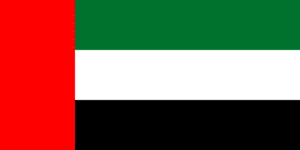Between 2014 and 2018, the accommodation and food, education, information and communication, arts and recreation, and real estate sectors overperformed in terms of growth, whereas the construction, logistics, professional services, public, and oil and gas sectors underperformed.
Transportation:
Dubai International Airport became the busiest airport in the world by international passenger traffic in 2014, overtaking London Heathrow.
Abu Dhabi, Dubai, Sharjah, Ajman, Umm Al Quwain, and Ras Al Khaimah are connected by the E11 highway, which is the longest road in the UAE. In Dubai, in addition to the Dubai Metro, The Dubai Tram and Palm Jumeirah Monorail also connect specific parts of the city. There is also a bus, taxi, abra and water taxi network run by RTA. T1, a double-decker tram system in Downtown Dubai, were operational from 2015 to 2019.
Salik, meaning open or clear, is Dubai’s electronic toll collection system that was launched in July 2007 and is part of Dubai’s traffic congestion management system. Each time you pass through a Salik tolling point, a toll will be deducted from drivers’ prepaid toll account using advanced Radio Frequency Identification (RFID) technology. There are 4 Salik tolling points placed in strategic locations in Dubai: at Al Maktoum Bridge, Al Garhoud Bridge, and along Sheikh Zayed Road at Al Safa and Al Barsha.
A 1,200 km (750 mi) country-wide railway is under construction which will connect all the major cities and ports. The Dubai Metro is the first urban train network in the Arabian Peninsula.
The major ports of the United Arab Emirates are Khalifa Port, Zayed Port, Port Jebel Ali, Port Rashid, Port Khalid, Port Saeed, and Port Khor Fakkan. The Emirates are increasingly developing their logistics and ports in order to participate in trade between Europe and China or Africa. For this purpose, ports are being rapidly expanded and investments being made in their technology.
The Emirates are historically and currently part of the Maritime Silk Road that runs from the Chinese coast to the south via the southern tip of India to Mombasa, from there through the Red Sea via the Suez Canal to the Mediterranean, there to the Upper Adriatic region and the northern Italian hub of Trieste with its rail connections to Central Europe, Eastern Europe and the North Sea.
Flag of UAE:
The flag of the United Arab Emirates contains the Pan-Arab colors red, green, white, and black. It was designed in 1971 by Abdullah Mohammed Al Maainah, who was 19 years old at that time, and was adopted on 2 December 1971. The main theme of the flag’s four colors is the unity of Arab nations.

All seven Emirates use the federal flag interchangeably as the flag of the emirate.
Red: The Hashemite dynasty;, Courage, bravery, hardiness, strength, and unity.
White: The Umayyad dynasty; cleanliness, honesty, peace, and purity
Green: The Fatimid dynasty;, prosperity, hope, joy, love, and optimism
Black: The Abbasid dynasty; defeating enemies and strength of mind; it does not refer to oil

